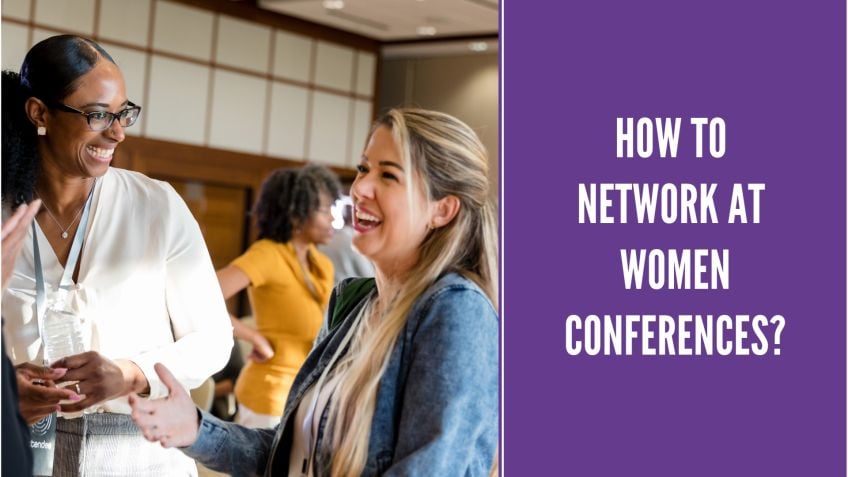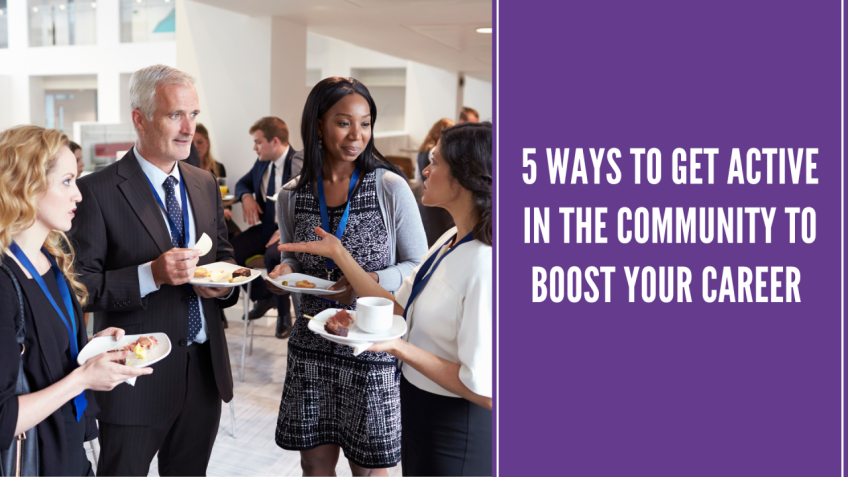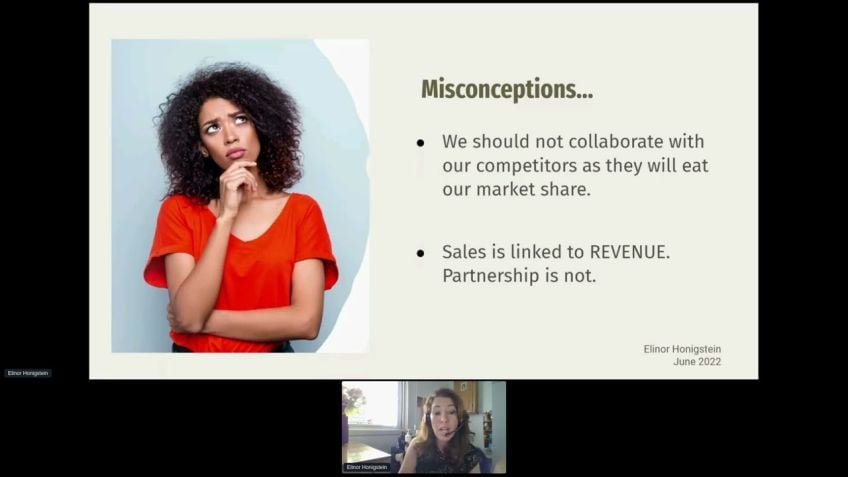Elizabeth Gulliver - A Blueprint for Virtual Hallways: Creating Kismet Inside Your CompanyApply to Speak
Creating a Sense of Community at Work in a Digital World
In a world where meetings have gone from in-person to digital, many employees are feeling a great sense of disconnection. We have shifted from physically interacting with one another to juggling work, life, and family all at once. The challenge is recreating the sense of community, inclusion, and a sense of belonging within our companies. So how do we achieve this? Virtual hallways - interactions that allow for spontaneous, informal and meaningful connections - could be the solution we all need.
Understanding Virtual Hallways
Virtual hallways are not exactly events nor forced interactions, but rather a digital canvas for spontaneous and casual engagements. These engagements open opportunities for employees to get to know one another beyond their job titles and responsibilities. They can share life stories, talk about hobbies, or discuss challenges they face outside work. If implemented properly, virtual hallways can be the glue holding together the working community, cultivating a more inclusive, diverse, and employee-first culture.
Building Virtual Hallways in Your Company
So, what does it take to build a virtual hallway? Here are some insights.
Resonating Topics
Select topics that are relatable and resonate with your team. Focus on areas where work and life intersect. For instance, sharing culinary experiences can be a fun and engaging topic for your team.
Time Management
Respect everyone's time. Virtual hallways should not extend for more than 40 minutes. Let these sessions be breather moments between other official meetings.
Casual Conversations
Facilitate casual conversations. It's okay to be casual and informal. Opt for breakout rooms for smaller, intimate groups. This can help to create a less formal atmosphere and foster better connections.
Consistency
Be consistent. Regular routines are comforting and anticipated by everyone. Therefore, consistency is key when setting up these virtual connections.
Reaping the Benefits of Virtual Hallways
Implementing virtual hallways brings several benefits to your organization:
- Value: Provides a platform for employees to feel valued, seen, and heard.
- Connections: Strengthens relationships between peers and managers, making the workplace more tight-knit.
- Innovation: Helps to foster innovation by breaking down silos and promoting collaboration.
Virtual hallways are a great addition to any company's remote work strategy. They not only create opportunities for individuals to bond but also help improve overall workplace culture. So, extend your office corridors into the virtual world and enjoy the seamless connections and improved interaction in your team.
Video Transcription
Everyone. Hi, this is Liz. Thank you, everyone for being here today. Really excited to talk with all of you about how we can build community within companies. So I'm gonna go ahead and share my screen to start.Um But while I get going, I would love to know, you know what I, what I really want to talk about today. Oh, sorry, wrong thing. Let me one sec you talk about today is this sense that a lot of us get, which is feeling really disconnected. And so we've gone from this, from being together, from bumping into each other in the hallway, from talking to each other face to face, from sitting next to each other to this, to being in the middle of chaos, to being at the center of work and life and family all together to trying to do work and life at the same time throughout your day.
And the question is, how do we recreate this? How do we recreate a sense of community, a sense of belonging and a sense of inclusion within our companies? And sure this is one event. It doesn't always have to look like that. But how many of you have had a best friend at work or how many of you have had someone that maybe you don't have their cell phone number, but you really like to talk to them when you get to the office. Share a coffee, talk about the weekend, ask how they're doing. You may know things about their lives. Although you may not consider yourself friends outside the office. I'm gonna call that kismet. That's the energy, the good positive vibes that you get from the people around you.
And we're probably never going back to this, right? Most of us are never going back to working full time in an office, but we still need to recreate this. So I think the way to do that is to turn companies into centers of community collaboration and learning. Make a company a place where people go to work with each other, to learn with each other, but most importantly to be with each other. Now, does that really matter? Arguably? Yes. So 82% of employees say that they're struggling to juggle work and life that they don't know how to do the two together at the same time. And 69% of employees feel that their company doesn't care about them as a person that their work sees them as an employee, but not as an individual, given both of those numbers. It's no surprise that 41% of employees are thinking about leaving their job right this minute. So what can we do? And what can employers do? The answer is culture and what culture comes down to is what people do, what leaders do. So what do we see? And I wanna be really clear here. Leadership is not hierarchical. That means that leaders aren't only at the top of your company. Leaders are throughout your company. So you'll find them at different levels across different horizontal structures. It could be somebody below you.
Leaders are people who demonstrate the characteristics that we all want to emulate, who demonstrate the path forward through what they do. So what people do, what leaders do and how teammates treat each other. These are the three core principles that can drive empathy, inclusion and belonging and culture within a company. So that all sounds great, right? That's what all companies want. But how do we do that when we've gone into a hybrid world when we're digital first? So even in a case where you're back in an HQ, you might be doing a lot more work on your computer, you might be doing a lot more work alone. You may not be bumping into people for lunches and coffees. So how do you recreate this? I think that that means putting your employee experience first. So rather than people having to go out and find things within their company experience comes to them. And in this case, I'm talking about virtual hallways. So that's what we're gonna talk about today, those virtual ways that you can bump into each other throughout the day, throughout your week and throughout your month with your peers and colleagues. How do we make that happen? One of my favorite prompts that I've heard people use is the question. If you really knew me, you'd know that and it makes you stop and think. So. If you pause for a minute right now, what would you tell a coworker if you really knew me?
You'd know that in my case. Maybe if you really knew me, you'd know that I have two little kids and they take up a lot of my time. Or maybe it's, if you really knew me, you'd know that I've been horribly lonely during the pandemic or I don't like working at home all the time. I'd like to be with colleagues or maybe something unrelated to that. If you really knew me, you'd know that in my free time I cook all the time. Who knows what it is? But everybody has an answer for that. So, when I'm talking about virtual hallways, what I'm talking about is a way to recreate that atmosphere to allow people to learn those kinds of facts about each other. Those if you really knew me, you'd know that fact. So what does it take to build a virtual hallway? They need to be built for topics that resonate with your group. So think about your peers. Think about your colleagues, this could be within just your department. It might be firm wide or it might be not within your company at all, but within a peer group. What kind of topics resonate, what kind of topics are, are new or unusual for people? And I would recommend going with something that isn't only work based. So think about things where work and life meet. What are those intersections?
I recently read a poll that most people who want to go back to the office, wanna go back. The first thing they wanna do is have a meal with coworkers. It's not sit at their desk, it's not being in a boardroom. It's have a meal with coworkers. And why is that? Because when you're sharing a meal, you're not just talking about work, you're talking about you, you're talking about the person next to you and you're learning about them in a new way. So those are the topics that you wanna strive for. Second. You want a virtual hallway to fit within your day. We're all busy. Nobody has time for two hour, three hour long sessions. Even an hour can be hard. So I recommend that virtual hallways are 30 to 40 minutes maximum that allows them to fit nicely within a day between meetings as a break. Think of them as a walk outside or a cup of coffee. A way to rejuvenate you a way to energize your day. Second or third. Excuse me. The proverbial water cooler. So you want to lead with breakouts and casual conversations here. You don't want a virtual hallway to feel overly formal. You don't want it to feel overly structured. What I recommend is either capping the number of people.
I've seen that work well, kind of creates a buzz around it too. So if you're an hr leader or somebody who's gonna start these within your organization, you might think about saying, hey, the 1st 20 people can come to this virtual hallway, but we're gonna repeat it every, every month, whatever that case may be or try breakout rooms. So let's say you've got 40 people. Maybe you say the topic that week is that you're gonna talk about summer plans and summer vacations and maybe you put people into breakout rooms, 2 to 3 people at once, bring them back in, talk and break them back out again. So that's one way to create those moments of intimacy and then rinse and repeat humans are predictable. We love to know what's coming next and we like to know what we can depend on. So I recommend frequency and consistency here to help you build that dialogue, to help you build that consistency within your firm. And what's the result of something like a virtual hallway? It makes employees feel valued, seen and heard. Why is that important? It's important because I would say there's a war on talent out there as companies go to hybrid as they go fully digital as they go, remote companies can hire talent anywhere. And that means there's three ways that a company can truly distinguish itself to its employees.
One is compensation. One is the relationship with the manager and the third is their relationship with Pierce and events like virtual hallways take care of numbers two and three, we're not gonna touch the compensation. But what we can do is make sure that you have a tighter connection to your peers and to your managers and that tighter connection means feeling that you are included that you know each other and that you can bring your real authentic self to work. What's happening as we think about hybrid and the future of work. It's a big buzzword, right? People are very focused on this concept. What is the future of work? Nobody has a clear answer on that. What we do know is that it's not gonna look exactly like what it's looked like before. It's not gonna look like what it's looked like in the past. So if that's the case, what are things we can do to make the future of work more inclusive, more diverse and include people to feel like they belong, allow them to feel like they are part of something that I think will be one of the biggest differentiators and the key to that is connecting your people.
So that's your greatest asset. It's your greatest strength as a company. It's also the key to your success, to profitability and to growth as a company. So whether you're a tech start up, whether you're a behemoth in a huge company, the key is to leverage and connect your people. You wanna use that asset to protect it and that comes in many forms that can be retaining talent, recruiting talent, it might boost presenteeism productivity, it might make people feel more supported, it certainly improves loyalty and happiness and it impacts profits. And ro I those are the crucial aspects of a virtual hallway. It is making sure that you hit topics that people like. It is making sure that you keep them to a short length of time. It is making sure that you use breakout rooms and other ways to drive casual conversation and it's making sure that you do it in a repeatable manner. So what can that look like within a big meeting? Let's think about a meeting before some people come in. You come at different times, you're sitting around a board table, right? So there's a natural power dynamic there.
You've got the head of the table, you've got the people next to them, you've got the conversations that happened in the room before that you've got them meeting and then you've got the conversations that happen afterwards. So in a case where we've got some people in person and some people on camera or all people on camera, how can you recreate that what I've worked with a lot of companies to do is add virtual hallways onto a meeting. So if people stay after a meeting, that conversation continues in the virtual hallway rather than they are present in the room, what that does is allow everybody to contribute equitably to that conversation. So how do you make that happen? In practice? It's asking questions.
This all comes down to the questions that you ask of each other. So when you join a meeting, do you ask somebody how they are? Most of us do? And then do you go a step further than that? Do you ask them how their weekend was? Do you ask them what they had planned this week? Do you ask some questions that you might ask if you are in person? Hey, I remember you were doing this last weekend. How did it go? Hey, I remember that you've got a, a three year old. How's that kid doing? Whatever the case may be? What we found is that over time during this pandemic, teens have become more isolated, they become more siloed. And as a result, innovation has plummeted. That's death to a company. We cannot have sinking innovation because the minute the companies stop innovating, they stop growing. Virtual hallways are a way to combat that. It's a way to allow people to connect, to share and to belong together in a more connected way. So that's what virtual hallways are.
I hope that's helpful for you. I would love to answer any questions that you all might have in the chat and to hear how you've either engaged in virtual hallways before how you're trying to drive connection within your company or in the case where perhaps you haven't, what's been holding your company back?
And do you feel that you've been, they're able to connect more deeply with fewer individuals, connect more broadly with more individuals or I think as most people have seen, have you felt that you haven't been able to connect with anyone? Thank you, Arena. I love it. Have you ever tried a, a virtual hallway, Oria? I would love to know. Not yet. Ok. Well, hopefully you will. I think they are a great way. Yes, please do. There are a great, great way for companies to get started with connecting people. Well, what we've seen actually Microsoft did a recent study of over 5000 workers and what they found is that people were connecting more deeply but with fewer individuals. And so what that meant is that their teams were becoming more and more focused on their exact product work.
So whatever they were working on, that's all they were thinking about it was all they were working on. The problem there is that cream teams weren't cross pollinating, so they weren't connecting with each other outside of that realm. And that means that Microsoft as a whole found that innovation and productivity went down because people feel motivated when they're talking to other teams, they feel connected when they're talking to other teams. And frankly, they feel like they're part of something bigger that was no longer happening.
So virtual hallways are something that we worked with Microsoft to implement, to help people interconnect. Uh That's totally hard. Alexia. I hear you. Hopefully soon. I hope you're finding if not something full time, maybe something part time. The good news is that the pandemic's been brutal, especially for women. We all know that the numbers are terrible, but we are seeing is that the job market is taking up and I know that this is obviously a women in tech conference. I've seen that many tech companies are looking to hire part time, part time employees to start. So hopefully Alexia will cross our fingers for you and hope that something else comes up. Any other questions I can answer for anyone with us today? It's true. However, is it alone?
We can do so little? That's absolutely true. Well, listen, I thank you so much for joining. I really appreciate it. I appreciate your sharing your time with me. I know it's, it's a valuable thing and I, we none of us have enough of it. So thank you and I appreciate it. Have a good one.





